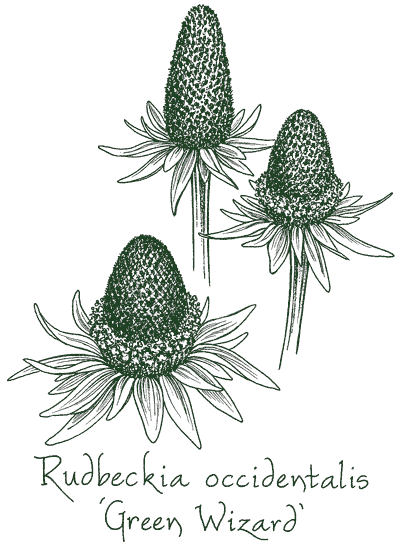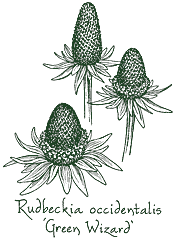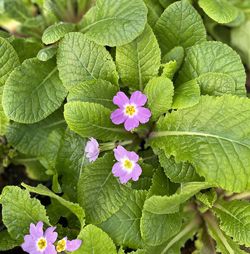
Rudbeckia
Black-Eyed Susan
Named by Linnaeus in honor of his teacher Olaf Rudbeck, this North American genus includes 25 to 30 species, many of them famous summer and late season bloomers. These easily grown selections promise to brighten borders and naturalized meadows plus make dandy additions to bouquets. Offering late fall and winter interest, they combine well with Asters, Eupatoriums and grasses.

If you appreciate the curious, the unusual, the truly unique, then allow this novelty to work some magic in your garden. From a leafy green basal clump appear 3 to 5 in. wide flowers on sturdy stalks, each featuring a huge central chocolate brown boss encompassed by approximately ten large and stiff well-spaced bright green sepals.
Unparalleled as a cut flower fresh or dried, florists, gardeners and birds seek out these extraordinary blooms that first form an intriguing golden ring of pollen around their striking cones. Quick to establish and undemanding, this attention grabber guarantees a flashy display of neon color when paired with Kniphofia linearifolia and Salvia ‘Limelight’.
Blooms July–September.
Size: 3' 0" – 5' 0" high x 2-1/2' wide.
Hardy to zone 4.
Please fill out our Registration Form to receive news of updates to the web site, availability of new plants, give us your feedback, and to be on the mailing list to receive future printed catalogs.
Other selections in this genus:
- Rudbeckia ‘American Gold Rush’
- Rudbeckia fulgida var. deamii
- Rudbeckia fulgida speciosa (Newmanii)
- Rudbeckia fulgida ‘Swiss Gold’
- Rudbeckia fulgida var. speciosa ‘Viettes Little Suzy’
- Rudbeckia grandiflora ‘Sundance’
- Rudbeckia laciniata ‘Goldquelle’
- Rudbeckia paniculata
- Rudbeckia subtomentosa
- Rudbeckia subtomentosa ‘Loofahsa Wheaten Gold’
- Rudbeckia triloba ‘Prairie Glow’










